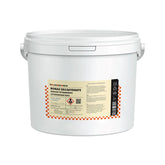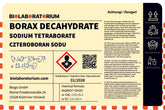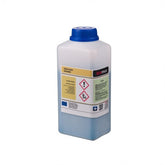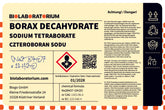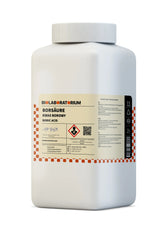Cadmium sulfide – a classic sulfide semiconductor with unique optical properties
Cadmium sulfide (CdS) is a widely used II-VI semiconductor that has played an important role in materials science and optoelectronics for decades. This inorganic material is characterized by its unique optical properties, making it a versatile and fascinating research subject. In this blog post, we will take a closer look at the special features of cadmium sulfide and highlight its significance in modern materials chemistry.
The Crystal Structure of Cadmium Sulfide
Cadmium sulfide crystallizes in a hexagonal crystal structure similar to the wurtzite structure. In this lattice, the cadmium and sulfur atoms are tetrahedrally coordinated, leading to high symmetry and stability of the crystal lattice. This arrangement of atoms is crucial for the material's electronic and optical properties.
The bonds between the cadmium and sulfur atoms are predominantly covalent in nature, which results in CdS having a relatively high melting point of over 1700°C. Furthermore, cadmium sulfide is chemically very stable and resistant to oxidation and corrosion.
Optical Properties of Cadmium Sulfide
The most striking feature of cadmium sulfide is its excellent optical properties. CdS is a direct semiconductor with a band gap of about 2.4 eV, which means it can very efficiently absorb and emit light in the visible spectral range.
By excitation with light energy greater than the band gap, electrons can be lifted from the valence band to the conduction band. This process of light absorption is of great importance for many optoelectronic applications, as it forms the basis for converting light energy into electrical energy.
Furthermore, cadmium sulfide exhibits high photoluminescence efficiency. When excited electrons return to the ground state, the energy is emitted in the form of light. The wavelength of this emitted light depends on the material's band gap and can be influenced by doping or nanostructuring.
Applications of Cadmium Sulfide
Due to its excellent optoelectronic properties, cadmium sulfide is used in a wide range of applications. Some of the most important areas of use are:
Solar Cells
CdS is an important component of thin-film solar cells, particularly in combination with cadmium telluride (CdTe). Its high light absorption and charge carrier collection make it an efficient semiconductor material for photovoltaic applications.
Photodetectors
The photoluminescence properties of CdS enable its use in various types of photodetectors, such as photodiodes and photoresistors. These components are used in cameras, motion sensors, and optical communication systems.
Electroluminescent Displays
Cadmium sulfide can also be used as a light source in electroluminescent displays. By applying an electrical voltage, CdS can emit light, which is utilized for the development of flat, energy-efficient displays.
Optical Amplifiers
Due to its high photoluminescence efficiency, CdS is also suitable for use in optical amplifiers. Such amplifiers are used in telecommunications and signal transmission via fiber optic cables.
Pigments and Dyes
Cadmium sulfide nanoparticles exhibit an intense yellow coloration and are therefore used as inorganic pigments and dyes in paints, coatings, and plastics.
Challenges and Outlook
Although cadmium sulfide has many attractive properties, there are also some challenges that must be considered when using this material. On one hand, cadmium as a heavy metal is potentially toxic, which requires safety aspects in handling and disposal. On the other hand, there is a risk of photodegradation, i.e., the degradation of the material under light exposure, which can affect the longevity of CdS-based devices.
Current research activities focus on addressing these issues and exploring new avenues for the application of cadmium sulfide. For example, strategies for surface passivation and stabilization of the crystal structure are being investigated to improve the lifespan and efficiency of CdS-based devices. Additionally, alternative, more environmentally friendly semiconductor materials are being developed as replacements for cadmium sulfide.
Despite these challenges, cadmium sulfide remains a fascinating and promising material in materials science and optoelectronics. With its unique optical properties and the continuous advancement of technologies, CdS will continue to play an important role in innovative applications in the future.

